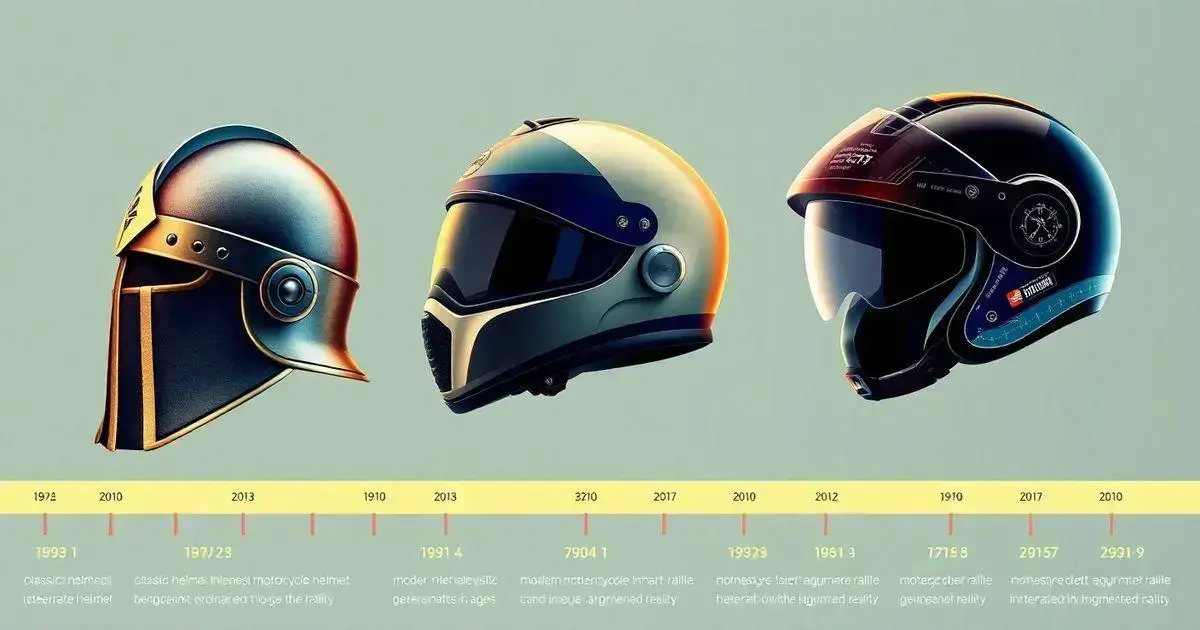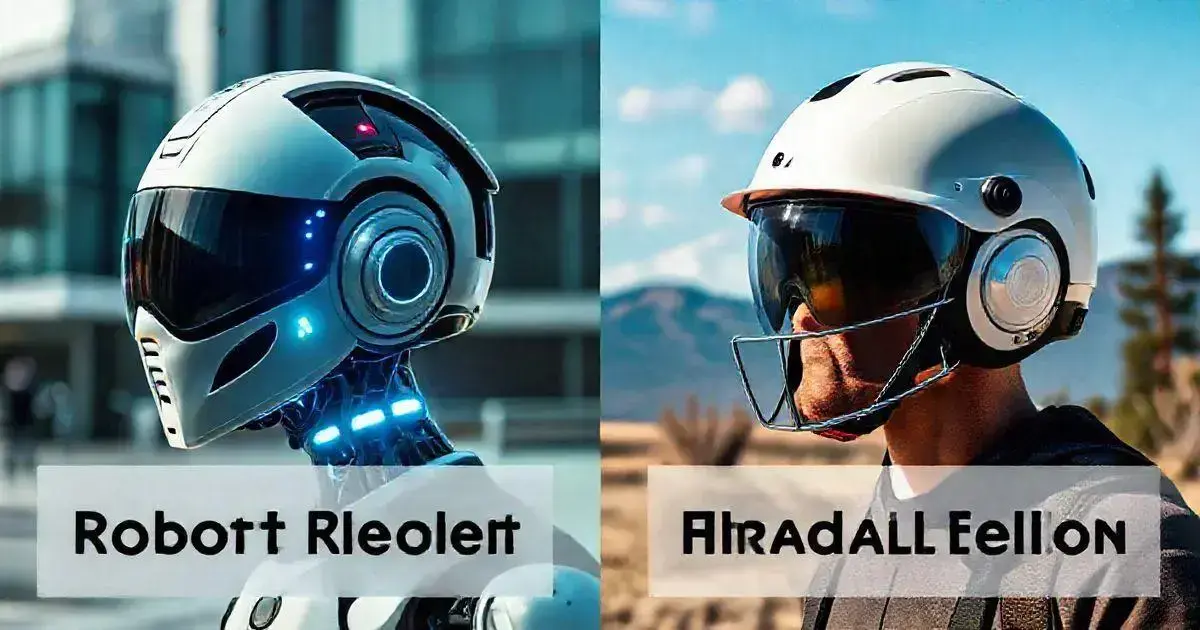What is a Robotic Helmet?
A Robotic helmet is a modern safety device that combines advanced technology with protective features. It is designed to enhance safety in various environments, especially in industrial settings.
These helmets are equipped with sensors, cameras, and communication tools that allow for real-time data collection and interaction. Robotic helmets can improve situational awareness, reduce accidents, and provide valuable feedback to operators.
Features:
- Enhanced situational awareness
- Real-time data collection
- Hazard detection alerts
- Integration of smart technologies
Benefits:
- Improved safety in industrial environments
- Proactive hazard detection and alerts
- Fostering a culture of safety in workplaces
Summary: A robotic helmet represents the fusion of safety and technology, marking a significant advancement in protective wear.
The Evolution of Helmet Technology

The evolution of helmet technology has transformed safety gear significantly over the years. Initially, helmets were simple, providing minimal protection. As understanding of safety increased, manufacturers began incorporating materials like fiberglass and polycarbonate for enhanced durability.
Today, helmets are equipped with advanced technologies, such as smart sensors, communication devices, and even augmented reality displays. This shift not only improves user safety but also increases operational efficiency in various industries.
Modern robotic helmets can detect environmental hazards, provide real-time alerts, and offer data that helps in monitoring safety conditions. As technology progresses, we can expect even more innovations that prioritize user protection and functionality.
Benefits of Using a Robotic Helmet
The benefits of using a robotic helmet are significant for enhancing safety in various environments. One major advantage is improved protection against head injuries, as these helmets are designed to withstand greater impacts than traditional ones.
Additionally, they often include real-time data collection features, which allow users to monitor their surroundings better and make informed decisions quickly.
Furthermore, robotic helmets can provide notifications for hazards, ensuring that users remain aware of potential dangers.
These helmets can also boost efficiency by reducing the likelihood of accidents, which can lead to downtime and loss of productivity.
Overall, the incorporation of technology in helmets represents a significant step forward in workplace safety and efficiency.
How Robotic Helmets Enhance Safety

Robotic helmets enhance safety through advanced technology and design. They offer features such as impact resistance, which protects users from serious injuries.
Additionally, these helmets come equipped with sensors that monitor environmental conditions, alerting users to potential hazards.
The integration of communication tools allows users to stay connected with their team, improving coordination during high-risk tasks.
Furthermore, robotic helmets can analyze data to suggest safety improvements, contributing to a culture of safety awareness.
This technological advancement marks a significant step forward in workplace safety protocols, ensuring that users are better protected in their environments.
Industries Adopt Robotic Helmets
Many industries are adopting robotic helmets to enhance safety and efficiency among their workforce.
Construction sites, for example, utilize these helmets to protect workers from falling debris and other hazards.
The manufacturing sector also benefits from robotic helmets, which provide real-time monitoring of machinery and alerts for potential malfunctions.
In healthcare, robotic helmets can assist medical staff by offering hands-free communication and quick access to patient data during emergencies.
Additionally, mining operations use these helmets to ensure that workers remain aware of their surroundings in dangerous environments.
By adopting robotic helmets, these industries prioritize safety and demonstrate their commitment to worker well-being.
Comparing Robotic Helmets and Traditional Helmets

When comparing robotic helmets and traditional helmets, several key factors come into play.
Traditional helmets mainly provide basic protection against head injuries, focusing on impact resistance and overall durability.
In contrast, robotic helmets incorporate advanced features such as sensors and communication devices, which enhance user safety and situational awareness.
These helmets offer real-time monitoring of environmental conditions, alerting users to potential dangers that traditional helmets cannot.
Additionally, the integration of smart technology in robotic helmets allows for data collection, enabling employers to track safety metrics and improve workplace conditions.
While traditional helmets are reliable, robotic helmets represent the next step in protective gear, aiming to protect users not just from impacts, but from evolving workplace hazards.
Future Innovations in Robotic Helmet Design
Future innovations in robotic helmet design promise to push the boundaries of safety gear.
One exciting area of advancement is smart fabrics, which can adjust for temperature control and breathability, enhancing user comfort.
Another innovation involves integrated augmented reality (AR) systems that overlay crucial information in the user’s line of sight.
This feature can help workers navigate complex environments with ease and avoid potential hazards.
Additionally, advancements in battery technology will lead to longer-lasting power for sensors and communication devices, making helmets even more effective.
Lastly, the idea of personalized helmets tailored to the specific needs of different industries will become more common, ensuring maximum safety and usability for all workers.
User Feedback on Robotic Helmets

User feedback on robotic helmets has been largely positive, as many users report enhanced safety features.
Workers appreciate the real-time notifications that alert them to potential hazards in their environment.
Additionally, operators enjoy the hands-free communication capabilities, which streamline teamwork and improve coordination.
Many users also highlight the increased comfort provided by ergonomic designs and adjustable features.
However, some feedback indicates a need for improved battery life and durability under extreme conditions.
Overall, user experiences show that robotic helmets can greatly enhance safety and efficiency in the workplace.
Conclusion: Embracing Robotic Helmet Technology
Embracing robotic helmet technology is a significant step towards enhancing safety in various industries. This technology offers workers added protective features and improved situational awareness through real-time data analysis.
The integration of smart sensors allows for immediate alerts about on-site hazards, making it essential for maintaining a safe working environment.
As industries evolve, adopting robotic helmets can lead to a safer workforce and fewer accidents, paving the way for innovation in safety gear.
Therefore, investing in these helmets is more than just a trend; it is an essential move for the future of workplace safety.
Embracing the Future of Safety with Robotic Helmets
As we move forward, it is clear that robotic helmets are not just a trend but a vital component of workplace safety. The integration of advanced technologies offers numerous benefits, including improved protection and real-time hazard detection.
By adopting these innovative helmets, industries can significantly reduce accidents and injuries, fostering a safer work environment for all employees.
This evolution in safety gear represents a proactive approach to addressing modern workplace challenges, ensuring that workers are equipped with the best tools to stay safe.
In conclusion, the embrace of robotic helmet technology is essential for enhancing safety standards and protecting the well-being of workers in every field.